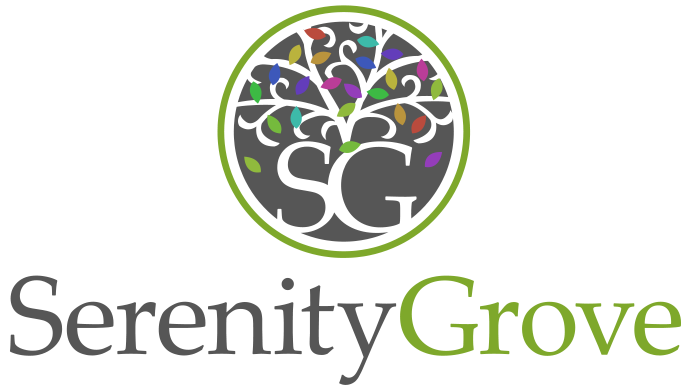In the battle against opioid addiction, naltrexone and naloxone are critical yet distinct medications. Although their names are similar and both are employed in opioid treatment, they serve different purposes and have unique effects. So what’s the difference between Naltrexone vs Naloxone? Naltrexone is used primarily for long-term opioid and alcohol addiction management, helping to prevent relapse by blocking the euphoric effects of opioids. On the other hand, naloxone is an emergency medication designed to rapidly reverse opioid overdose symptoms, saving lives during critical situations.
Serenity Grove in Athens, Georgia, incorporates both these medications into a comprehensive treatment strategy to address various stages of addiction and recovery. This article delves into the specifics of each medication, highlighting their differences and the roles they play in the recovery process, underscoring the importance of understanding these differences for those involved in or seeking treatment for opioid addiction.
If you or a loved one are struggling with opioid addiction, call us now. Our opioid addiction treatment program in Georgia combines evidence-based practices in a trauma-informed setting. Call us now at 844-904-3485 or verify your insurance now.
What Is Naltrexone?
Naltrexone is an FDA-approved medication that treats both opioid and alcohol dependence. It acts as an opioid antagonist, blocking the brain’s opioid receptors, which stops the euphoric and calming effects usually linked to opioid use. This significantly cuts down on cravings and reduces the chance of relapsing in people recovering from opioid addiction. Naltrexone is also effective in managing alcohol use disorder (AUD), reducing the urge to drink and preventing relapse by blocking the buzz alcohol creates.
Naltrexone can be taken either as a daily oral pill, available under the brand names ReVia or Depade, or as a monthly injection called Vivitrol. Both methods help maintain a constant effect, aiding in long-term recovery. By preventing the enjoyable effects of opioids and alcohol, naltrexone is key in treatment plans for those aiming to overcome addiction and stay sober, making it a vital and versatile tool in the fight against substance dependence.
What Is Naloxone?
Naloxone is a fast-acting opioid antagonist primarily used to reverse life-threatening depression of the central nervous system and respiratory system caused by an opioid overdose. Known for its quick ability to counteract the effects of opioids like heroin, morphine, oxycodone, and synthetic opioids such as fentanyl, naloxone is administered either through injection or as a nasal spray under the brand name Narcan. This makes it indispensable in emergency situations for anyone at risk of an opioid overdose, including first responders and family members of individuals with opioid addiction.
When administered, naloxone works by binding to opioid receptors in the brain, effectively blocking the impact of opioid drugs. If a person has stopped breathing or is struggling to breathe because of an overdose, naloxone can quickly restore normal respiration. However, it does not affect alcohol intoxication. While naloxone can trigger symptoms of opioid withdrawal, these effects indicate that the medication is working, making it crucial to seek emergency medical help immediately after its administration. Due to its life-saving capabilities, naloxone is a critical component of emergency response kits worldwide, offering a crucial window of opportunity to save lives during opioid overdose incidents.
Key Differences Between Naltrexone vs Naloxone
While both naltrexone and naloxone are opioid antagonists, they are used in very different contexts due to their distinct properties and purposes:
- Naltrexone is intended for longer-term management of alcohol use disorder (AUD) and opioid dependence. It remains effective for over 24 hours but requires that patients be opioid-free for at least 7 to 10 days before starting treatment to avoid precipitating withdrawal symptoms.
- Naloxone (Narcan) provides rapid emergency treatment for opioid overdoses, with effects lasting between 30 to 90 minutes. It displaces opioids from receptors quickly to prevent fatality in overdose cases and is available over the counter, making it accessible for emergency use without a prescription.
Understanding these differences is crucial for proper use and to ensure safety in treating opioid-related issues.
Impact and Side Effects of Naltrexone and Naloxone
The effectiveness and duration of naltrexone and naloxone are tailored to their specific uses in treating addiction and reversing overdoses. A single 50-milligram dose of naltrexone can suppress alcohol cravings and block the effects of opioids for at least 24 hours. Its injectable form lasts even longer, providing support for a month, helping prevent relapse. Naloxone, whether used as a nasal spray or injection, works much faster, reversing the effects of opioids in just 30 to 90 minutes. However, severe overdoses may require more than one dose to fully counteract the effects.
The side effects of these medications also differ. Naltrexone is usually easy to tolerate, with common side effects including nausea, stomach discomfort, dizziness, and headaches. Naloxone, designed to quickly reverse opioid overdoses, can trigger withdrawal symptoms such as anxiety, restlessness, irritability, muscle aches, chills, weakness, stomach pain, diarrhea, nausea, and vomiting. Additional complaints from naloxone include nasal irritation from the spray and joint or muscle pain.
In terms of safety with alcohol and misuse potential, naloxone is safe to administer to someone who has been drinking since it does not interact negatively with alcohol and continues to work effectively. Notably, naloxone is not addictive nor does it produce a high; it only affects people who have opioids in their system, making it a critical and safe tool for emergency responses to opioid overdoses.
Find Treatment in Georgia Today
Understanding the differences between naltrexone and naloxone is critical for effectively addressing opioid addiction and emergencies. At Serenity Grove, we are committed to using these tools to support recovery and save lives.
If you or someone you know is struggling with addiction and could benefit from treatment involving naltrexone or naloxone, Serenity Grove in Athens, Georgia is here to help. Our team is dedicated to providing comprehensive addiction treatment in a supportive environment. Contact us today to learn more about our programs and how we can assist you or your loved one on the journey to recovery.


